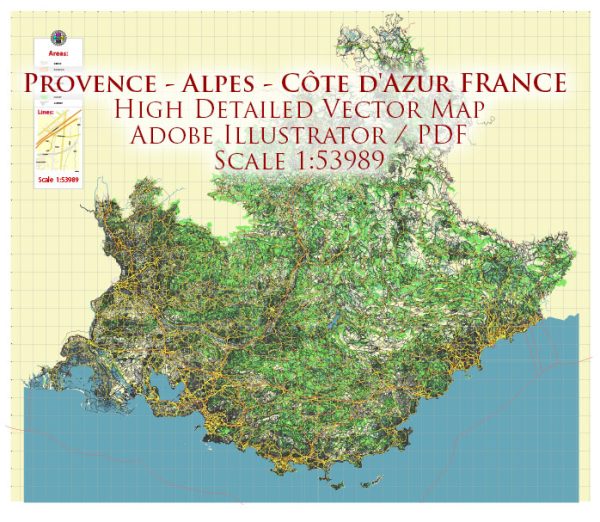The Provence-Alpes-Côte d’Azur region, often abbreviated as PACA, is located in the southeastern part of France. It is known for its stunning landscapes, including the Mediterranean coastline, the Alps, and picturesque towns. The history of urban development in this region is rich and varied, shaped by a combination of geographical, cultural, and historical factors.
- Ancient History:
- The region has a long history dating back to ancient times. Greek and Roman influences are particularly evident in some of the coastal areas, such as Marseille (founded by the Greeks around 600 BC) and Nice (a Roman city).
- Medieval Period:
- During the medieval period, the region saw the construction of numerous fortified towns and castles. This was a time of feudalism and conflict, and many of these structures were built for defense purposes. Examples include the fortress of Avignon, which played a significant role in the medieval history of the region.
- Renaissance and Baroque Periods:
- The Renaissance and Baroque periods brought about changes in architectural styles. Cities like Aix-en-Provence, with its elegant fountains and squares, showcase the influence of these periods. The region became a hub for arts and culture during this time.
- 18th and 19th Centuries:
- In the 18th century, the region experienced economic growth and cultural flourishing. The city of Marseille, in particular, became a major port and industrial center. The 19th century witnessed urban expansion and the development of transportation infrastructure, including railways and roads.
- Belle Époque and the Riviera:
- The late 19th and early 20th centuries saw the emergence of the French Riviera as a glamorous destination for the wealthy and artistic elite. Cities like Nice and Cannes became synonymous with luxury and leisure. The Belle Époque architecture along the coast reflects this era of opulence.
- Post-World War II Reconstruction:
- Like many parts of Europe, Provence-Alpes-Côte d’Azur faced challenges during World War II. The post-war period saw reconstruction efforts, and urban development projects aimed at modernizing infrastructure.
- Contemporary Urban Development:
- Today, the region is a blend of historic charm and modern amenities. Cities like Marseille have undergone urban renewal projects, transforming old industrial areas into vibrant cultural and residential spaces. The preservation of historical architecture is also a priority in many towns.
- Tourism and Sustainable Development:
- The region’s natural beauty and historical heritage make it a popular tourist destination. Balancing tourism with sustainable development has become a key consideration, with efforts to preserve the environment and cultural identity.
In summary, the urban development of Provence-Alpes-Côte d’Azur reflects a fascinating interplay of ancient influences, medieval fortifications, Renaissance elegance, industrialization, and the modern demands of tourism and sustainability. The result is a diverse and visually captivating landscape that attracts visitors from around the world.


 Author: Kirill Shrayber, Ph.D.
Author: Kirill Shrayber, Ph.D.